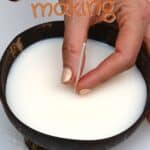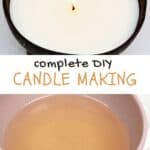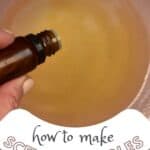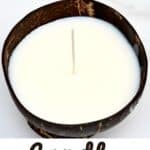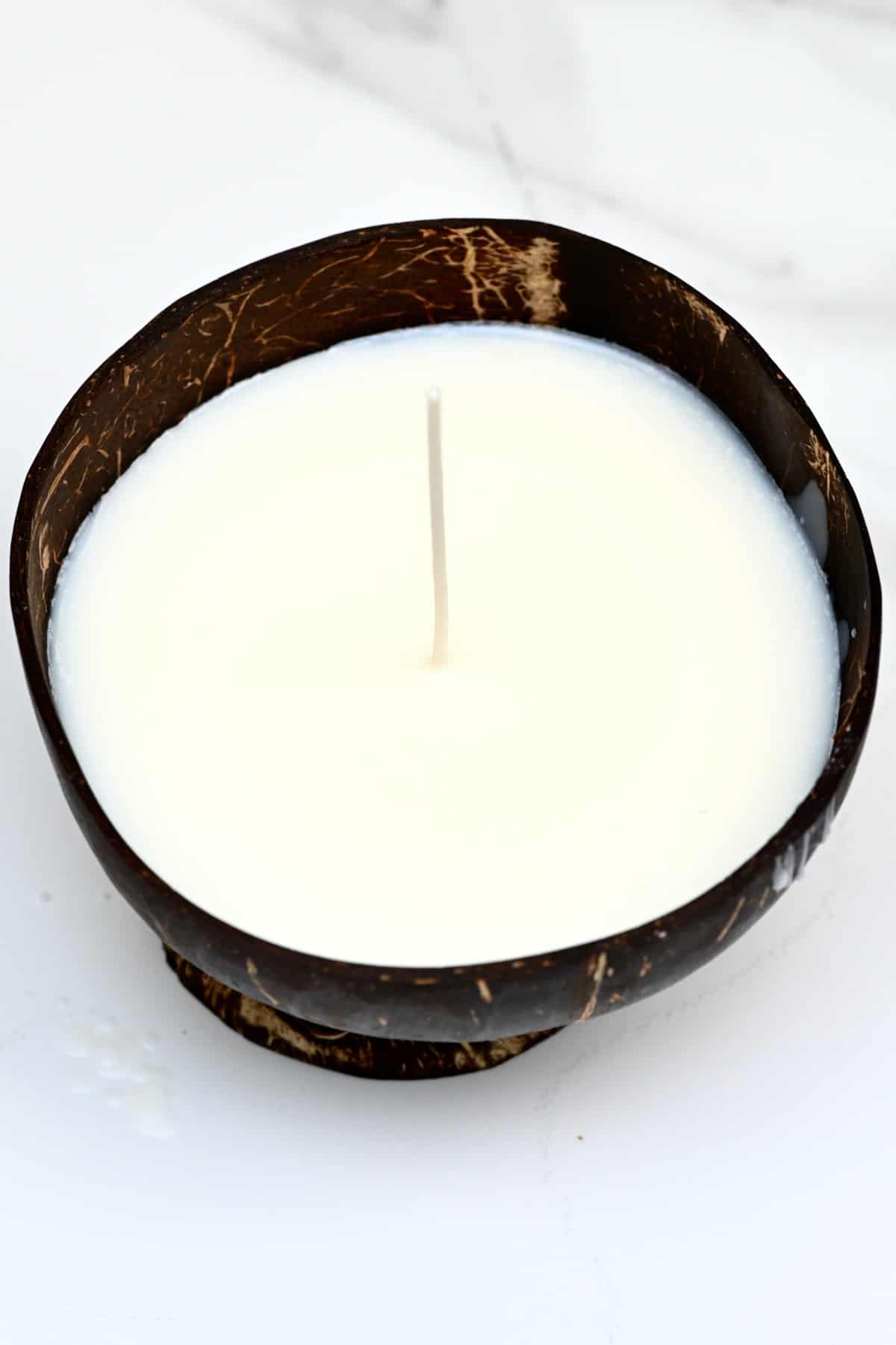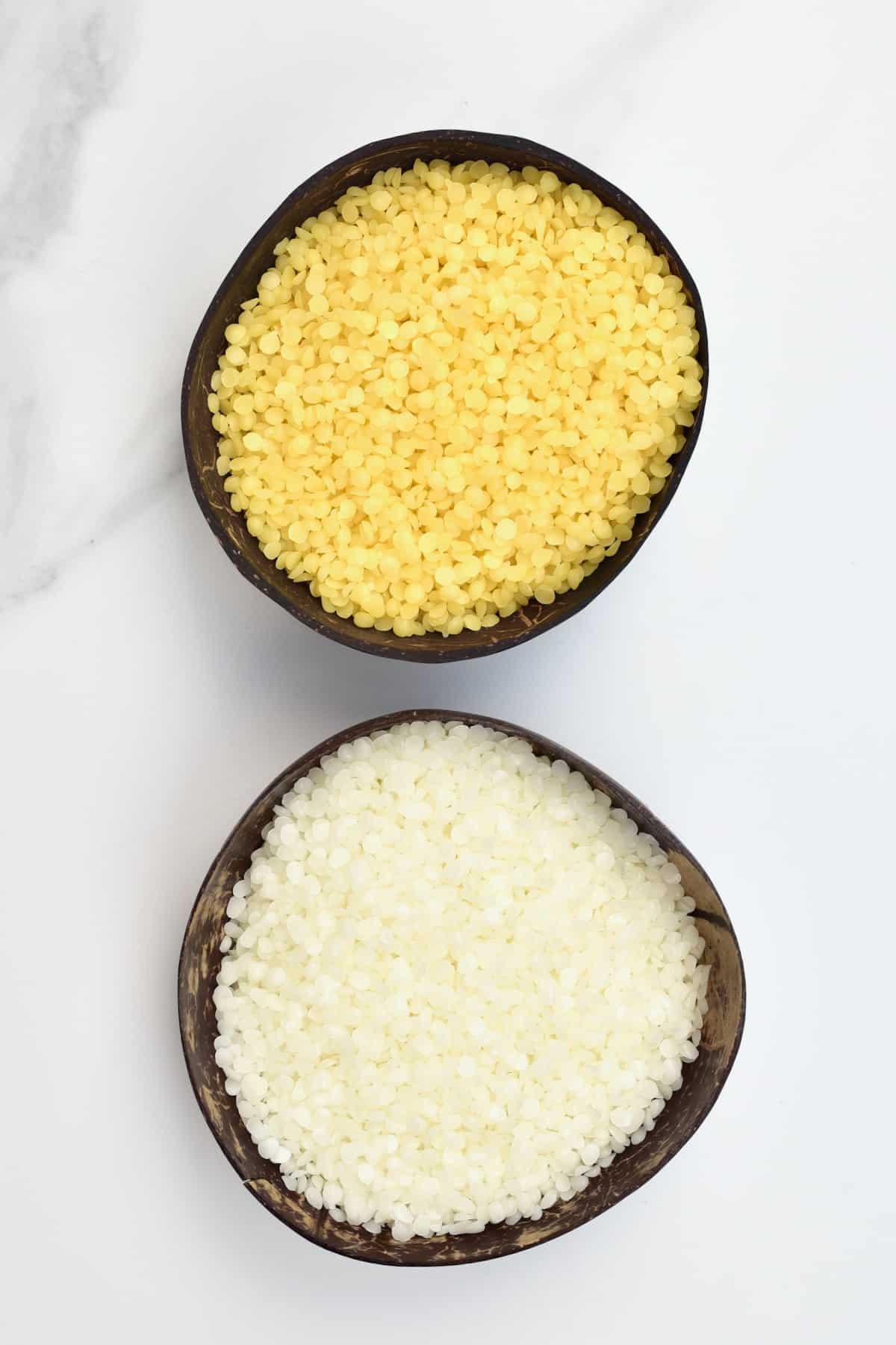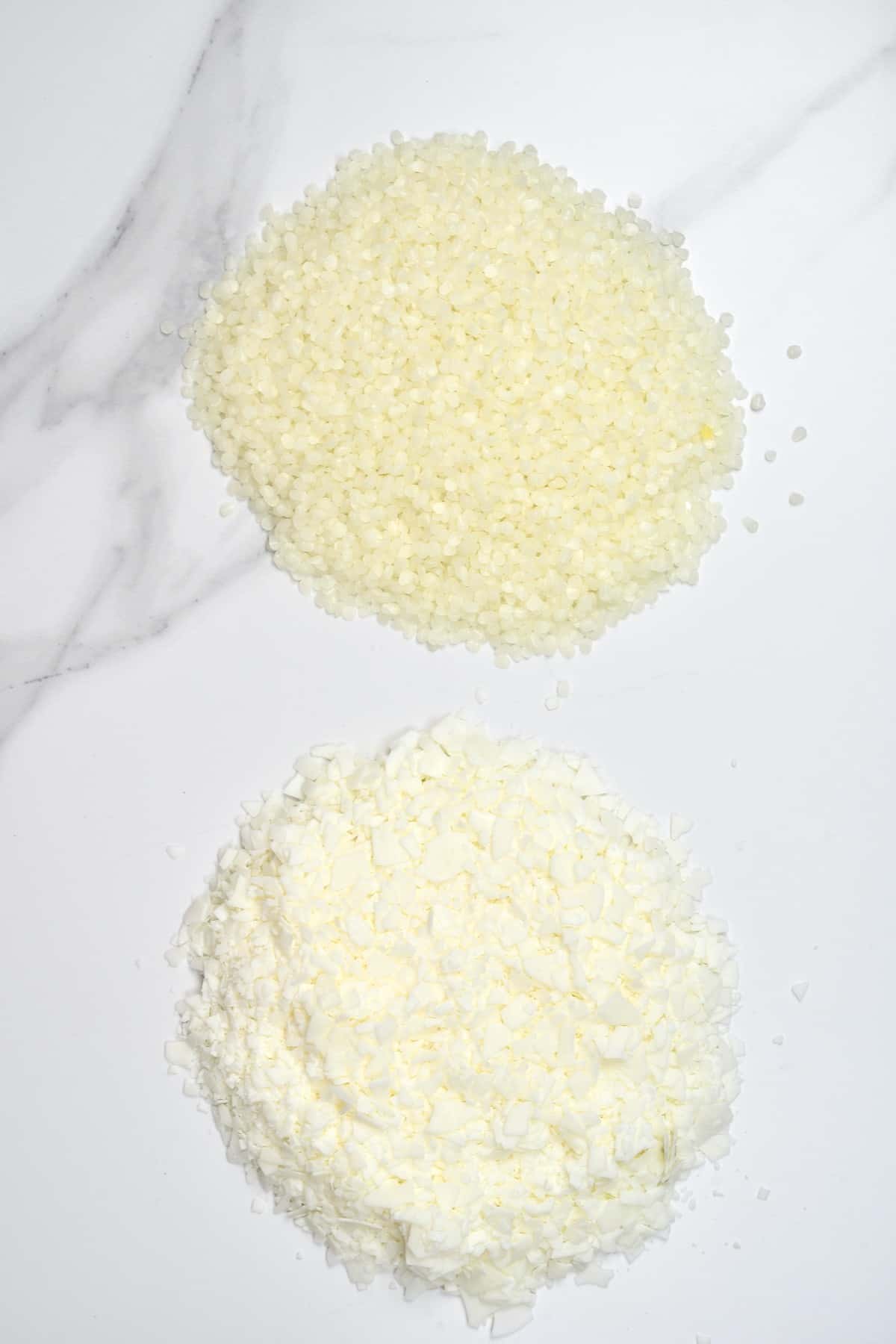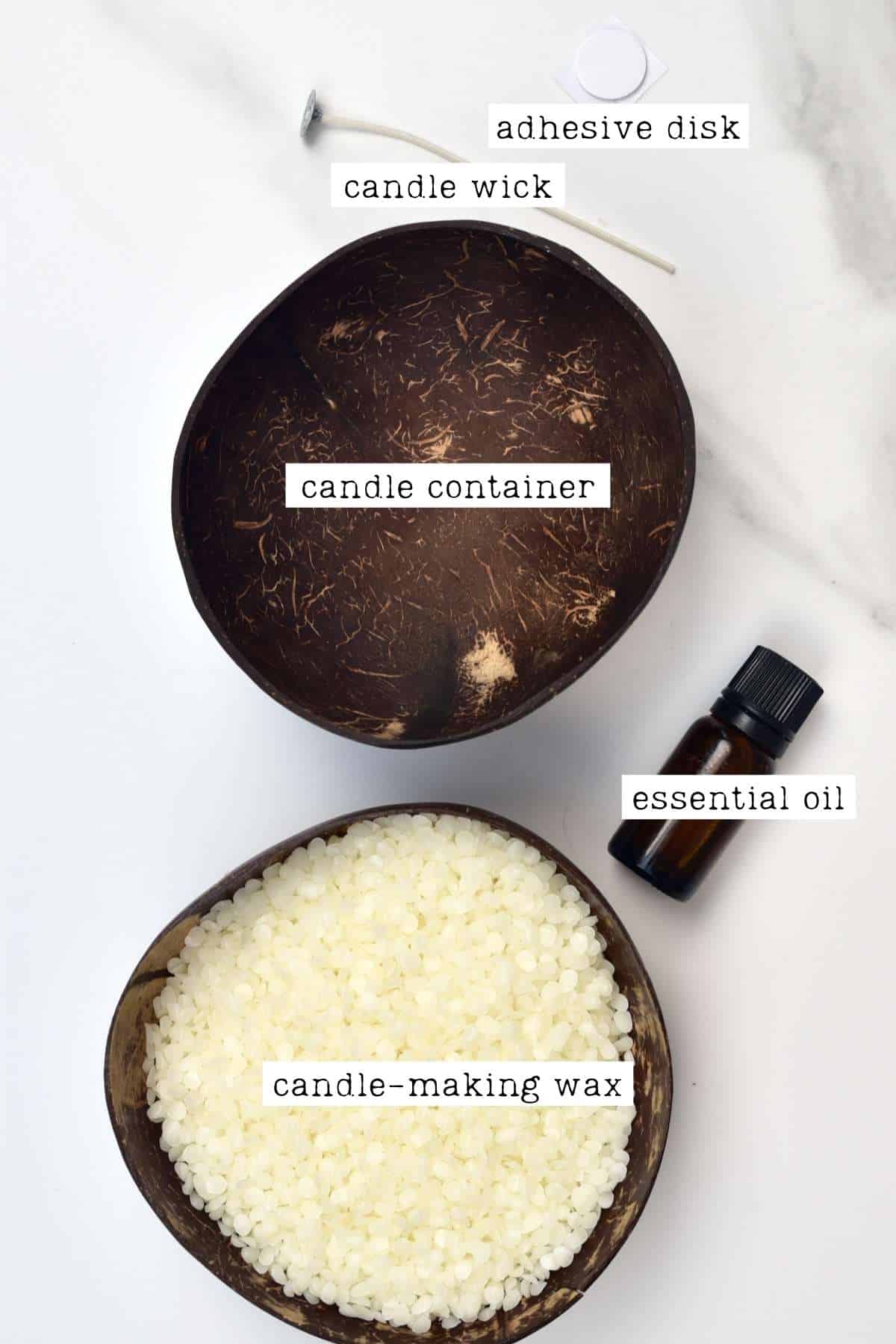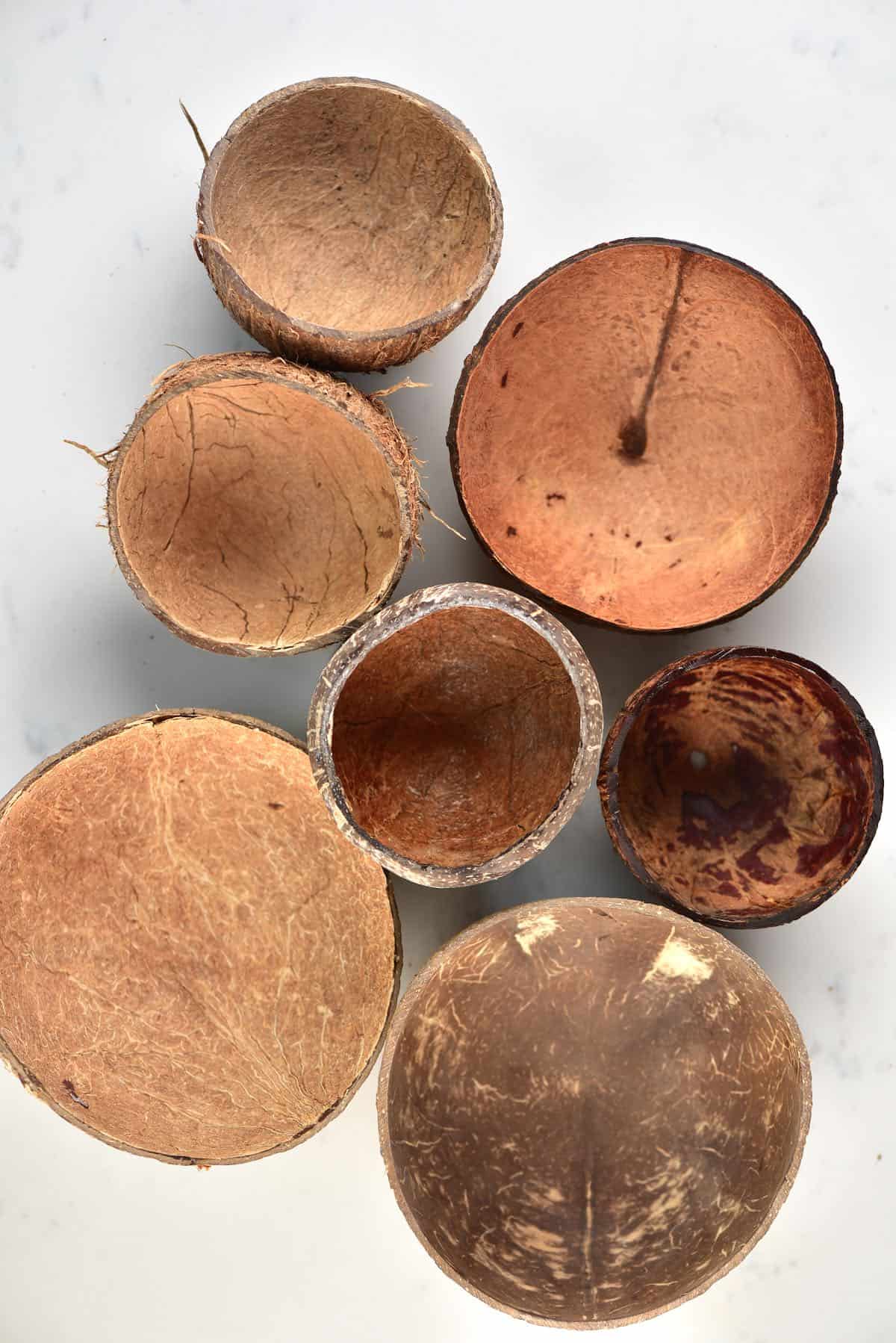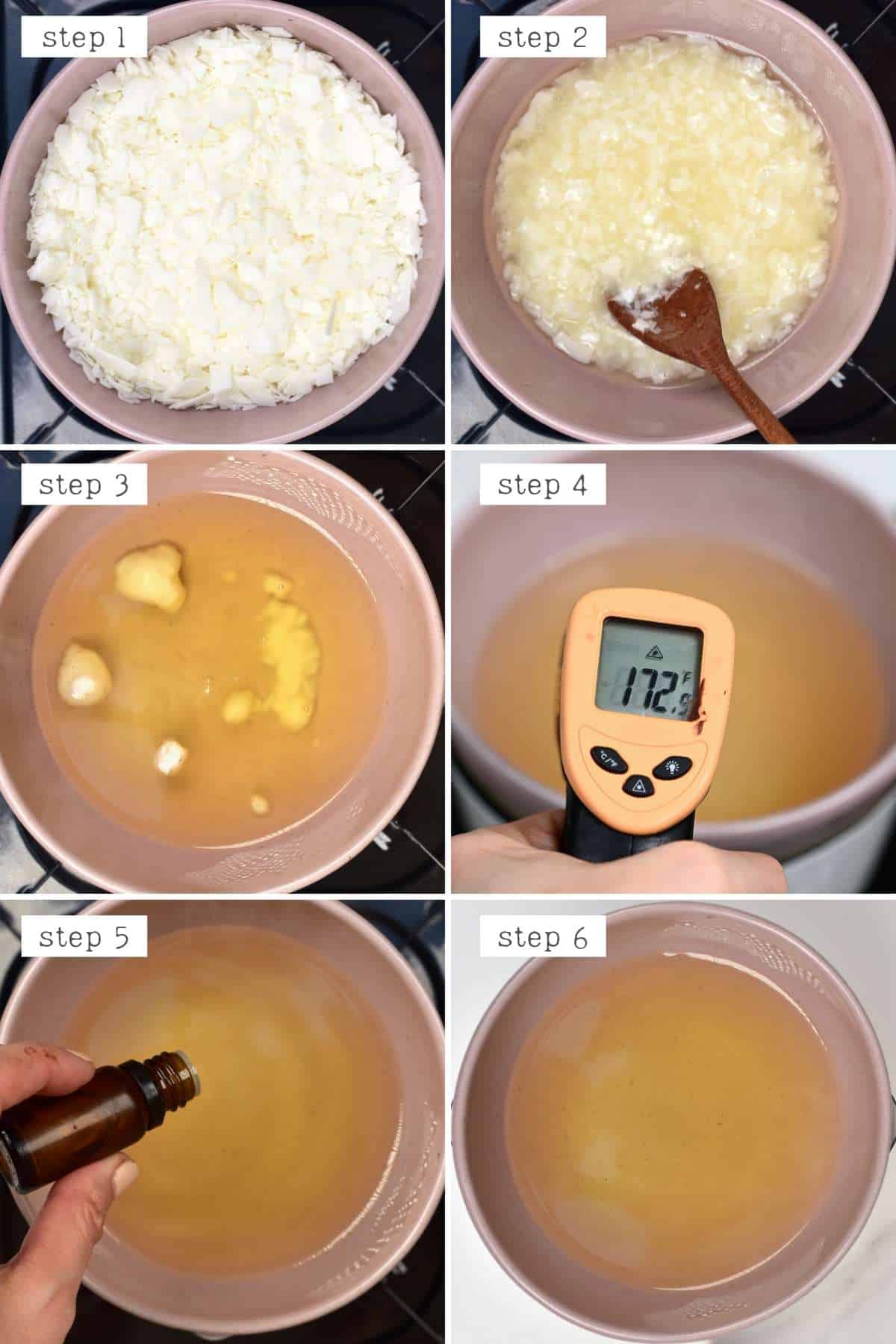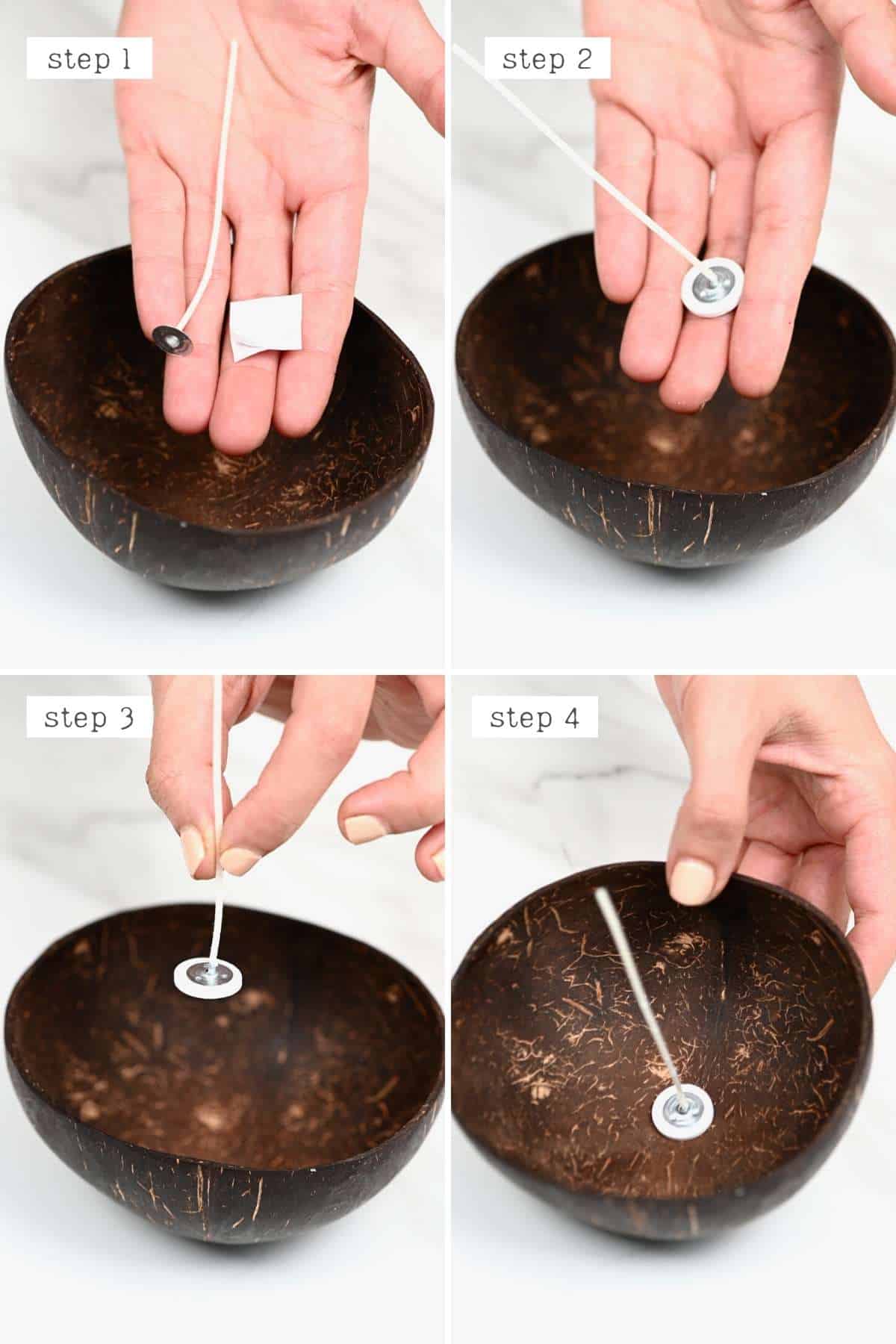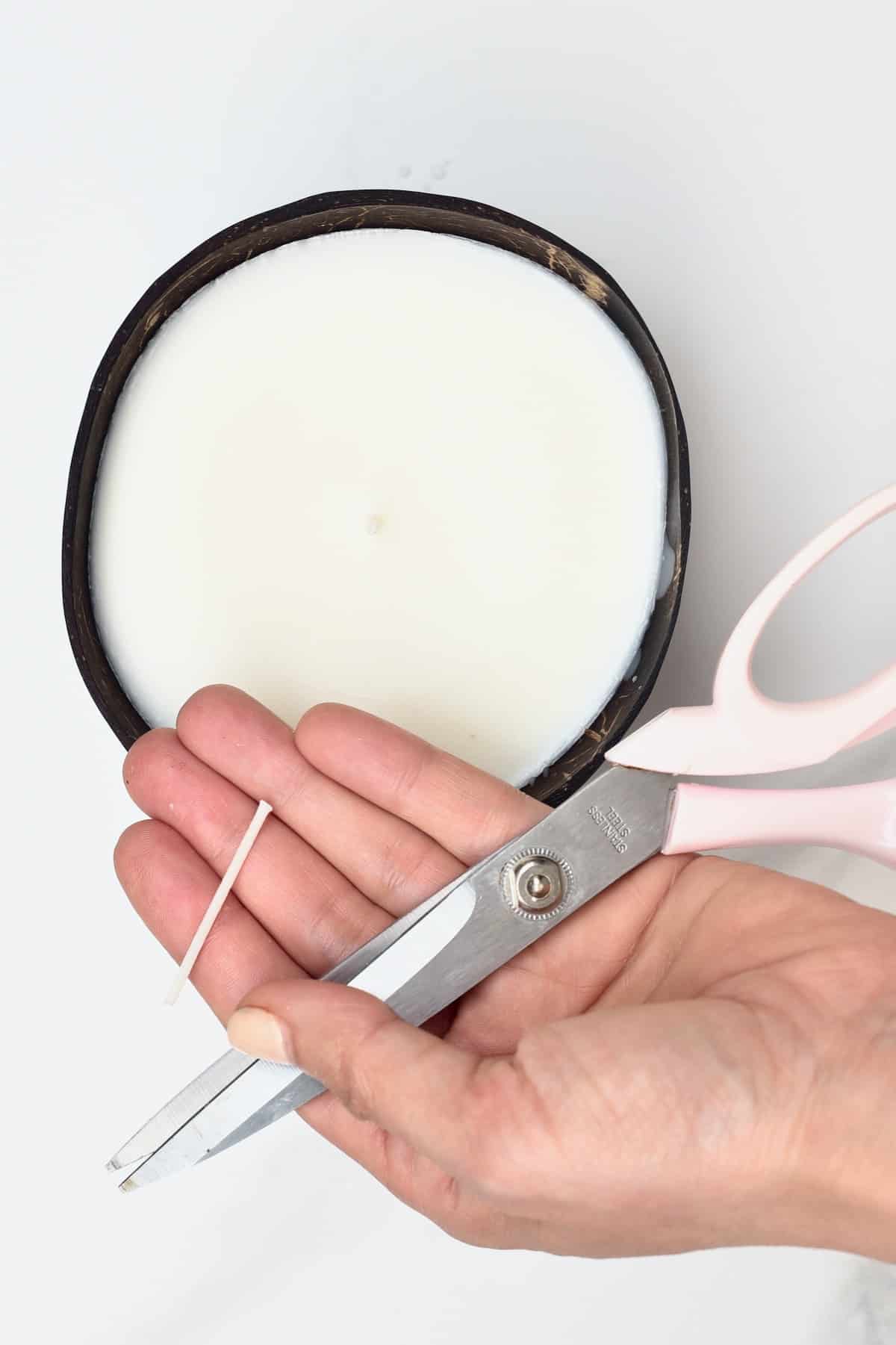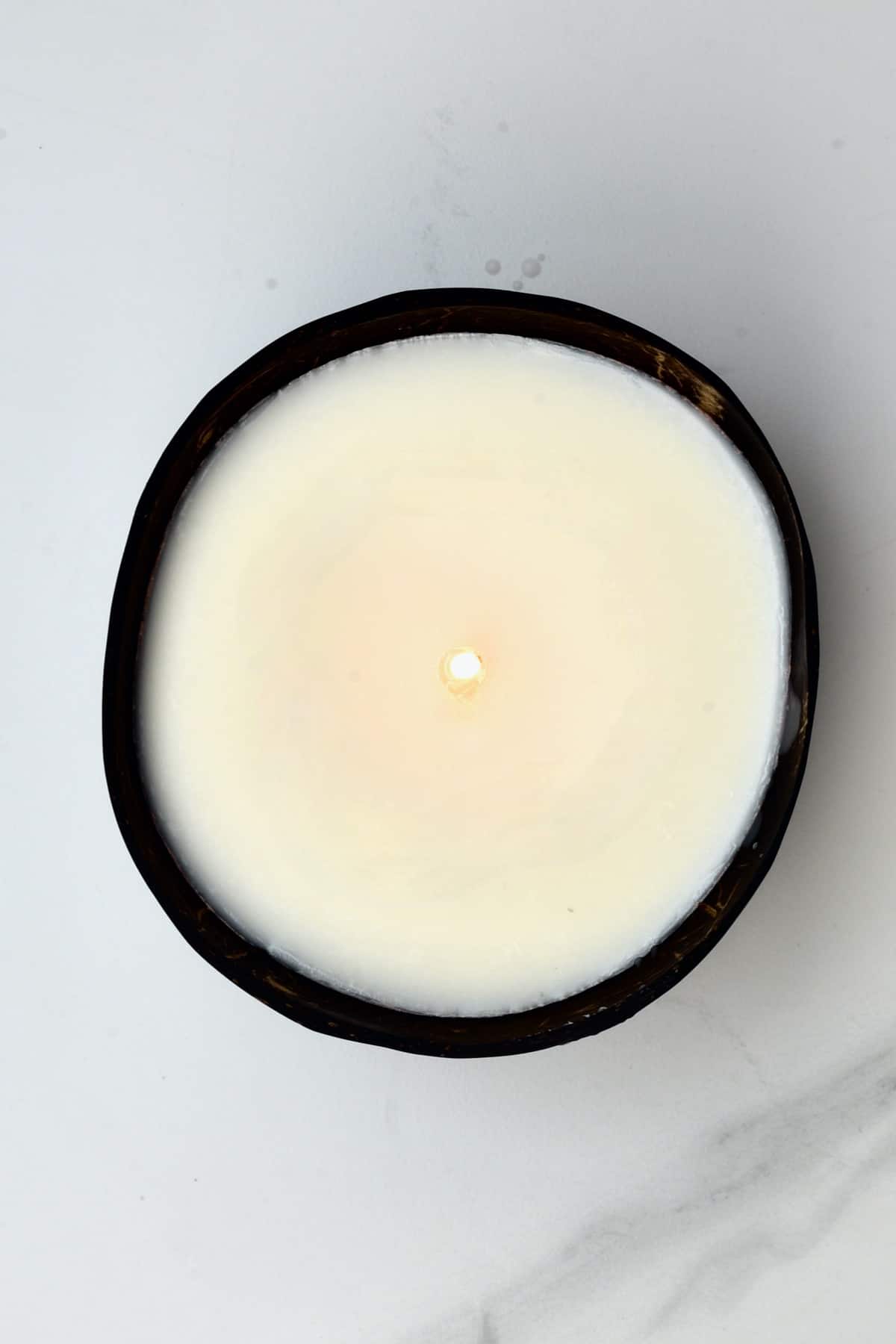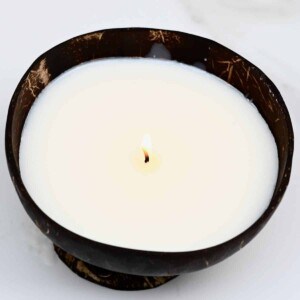I first came across the idea of learning how to make candles at home a few years ago. Always making homemade coconut products (like virgin coconut oil, shredded coconut, coconut cream, etc.) leaves me with lots of coconut shells to spare. I turn a lot of them into coconut bowls. And rest are often transformed into homemade candles. They are the perfect handmade gift for birthdays, Holidays (DIY Mother’s Day gift, anyone?), Christmas, etc.
Is It Safe to Make Your Own Candles
Yes, it’s quite safe as long as you follow the step-by-step tutorial carefully. Candle making, while an art, is also simple with the right ingredients and steps. I’ve compiled a thorough beginners’ guide on how to make candles (specifically homemade eco/natural soy candles in coconut shells). Complete with options for adding scent and color. So you can be making candles at home in no time – perfect for yourself or gifting!
Which Wax for Candle Making
The first thing to consider when candle-making for beginners is the type of candle wax you want to use. For many years, paraffin wax was the industry standard for candle-making. It’s cheap, can be used for molded and unmolded candles, and is best at throwing scents. However, with new studies revealing how paraffin releases harmful fumes, it’s not exactly eco-friendly. That’s where options like beeswax and soy wax have become popular. Beeswax is hard when solid, slightly sweet, and yellow. It’s great for making unscented and uncolored natural candles either in jars or molded (as pillars). Some believe the flame is brighter and lasts longer than soy wax. However, as it derives from bees and their hives, it’s not vegan-friendly. In comparison, soy wax (which you can purchase as pellets or flakes) is a healthy, renewable, and biodegradable material. It’s white when solid, burns clear, and carries scents better than beeswax, so best for colored and scented candles. It also burns up to 50% longer than paraffin wax. However, it is softer than beeswax, so not as great for pillar candles without added paraffin wax. Soy wax is also naturally vegan. Deriving from soybeans. It also produces less soot than many other wax types (including beeswax). More so, soy wax is cheaper to produce than beeswax AND is water-soluble (great for clean-up). If you want the most environmentally friendly option, look out for non-GMO, US-grown soy wax (if you’re based in the US; otherwise, wherever is closest to where you live). For these DIY candles, I made homemade soy wax candles.
What You’ll Need to Make Candles
There are just a few essential basics you need to make your own candles, including:
Candle holder: Make sure to use a heat-proof vessel. I.e., glass jars/pots/ glassware (with a thick base and even walls), ceramic (including teacups), metal, etc. I’ve used coconut shells that I prepared myself for natural eco candles. I don’t recommend plastic, terra cotta, or wood. Candle wax: I use natural soy wax flakes to make eco-soy candles. Fragrance: Use the essential oil of your choosing to create DIY scented candles. I used lavender oil. Avoid perfumes/colognes as they contain flammable ingredients. Candlewick & Adhesive disk: I used a cotton wick, but there are various types you can buy, including paper core or a wood wick (like popsicle sticks). If you don’t have an adhesive disk (glue dot), you could also use a glue gun or a drop of candle wax.
The wick size, length, and type you’ll need will vary based on the wax you’re using and the size of your candle. If it’s too small, the entire diameter of the candle won’t burn, and it can affect the scent throw, for example.
Color: This is optional, but if you want colored DIY soy candles, use soy dye for the best results.
You’ll also need a double boiler (small saucepan and glass bowl), an instant-read thermometer, scissors, a wooden or silicone spoon/spatula, and either two chopsticks or pencils (or a clothes peg) to make these natural candles.
How to Make Candles
First, prepare the containers/vessels, ensuring they’re thoroughly cleaned (with hot water and soap) and dry. If you want, you can also make homemade coconut shell candles.
Measure the Wax
To measure how much wax you need for your container, fill it (leaving at least ½ inch at the top) with the unmelted wax, and then double the amount of wax. You can also keep these measurements in mind:
1 lb soy wax, once melted will be about 18 fl oz (in liquid form), 1 lb beeswax, once melted will be about 16 fl oz (about 1 cup).
To do this before purchasing wax, you can pour water into your vessel of choice to know the volume of the container. This is how much melted wax you’ll need (double this for the volume of wax flakes).
How To Melt Wax For Candles?
My favorite, simple way to melt candle wax is using the double boiler method. First, place a heat-proof bowl over a small saucepan filled with a couple of inches of water, simmering. Ensure the water isn’t touching the bottom of your bowl. Add the wax to the bowl and stir it frequently to help it melt evenly. Heat the wax to between 158ºF/70ºC and 175ºF/80ºC (use an instant-read thermometer to check). It might take about 10-15 minutes for the wax to melt, though time varies based on the batch size. Avoid overheating the wax (not above 200ºF/95ºC for soy wax), as it will affect the quality of your DIY soy candles. For example, it can cause yellow discoloration and cracking, weakened fragrance, frosting, etc.
How To Make Scented Candles?
After melting, allow the temperature of the wax to cool down to 135ºF/57ºC, then proceed to adding fragrance with your preferred essential oil. The amount needed will vary based on the candle size and how strong you wish the scent to be. As a general guideline: start with 6% (1oz) fragrance per 1lb soy wax. Don’t go above 10% fragrance load. Once the scent is added, stir the wax consistently for at least 1-2 minutes to properly distribute it throughout the wax. Be aware that every wax has a maximum “fragrance oil load.” Beyond that, it can cause separation in the wax and even lead to a potential fire hazard.
How To Color Candle Wax? (Optional)
I decided to leave these coconut candles white (to mimic coconut flesh within the bowl). Here are several options you might be interested in (added to the double boiler when melting).
Soy dye comes in several forms, including liquid dyes, dye blocks, and dye flakes (the latter is my preferred option). This is the best way to color homemade candles as the dye will dissolve into the wax and won’t clog the wick. I like to use around 1/4 tsp per 1lb wax for a medium shade or 1/2 tsp for a darker shade. Crayons are a cheap option if already in your house. However, they can clog the wick, so they aren’t recommended. If you want to try them, use minimal amounts for a very pastel shade. Micah powder is a popular option for coloring wax melts, so you may assume it’s great for homemade candles. However, the pigment can cause a clogged wick, and the color can redistribute and settle after burning.
When making coconut candles, teacup candles, and other options where only the top is seen, you can sprinkle or brush the top of the candles with mica. You’ll still get color that way and the pretty effervescence when it melts, but it’s far less likely to clog the wick. If you want to color the DIY candles naturally, several options are available:
You could add some flower petals to the wax while it melts (i.e., red roses, lavender, hibiscus, safflowers, etc.), so the color leeches out into the wax. This method will take some experimentation to learn how much you need to make specific shades. But it is great for natural coloring, especially if you’re making floral-scented candles. You could also naturally infuse colors into the candles using several herbs and whole spices like alkanet, Cinnamon, madder root, and peppermint. Turmeric and saffron will also work well for orange/golden colors.
Avoid food coloring, which often contains ingredients that won’t bond with the wax.
How To Add The Wick?
There are several ways to adhere the wick to the bottom of the DIY candles. I used a small adhesive disk that I attached to the end of the wick and then within my container, where I wanted the wick to be. Alternatively, you could also use a few drops of melted wax and press the wick into it. Then hold the wick and wait a few minutes for it to dry and harden. You could also use heat-proof glue. To ensure it stays upright and in position while pouring the candle/s, use a pair of chopsticks or pencils to hold it in place. Optionally secure it further by taping the two together (or using rubber bands). A clothes peg would also work.
How To Pour Soy Candles?
Then, carefully pour the wax into your container of choice (steady and slowly to avoid air bubbles and splashes). Allow it to cool and harden naturally over several hours, but best overnight.
How to Trim the Wick?
Finally, use some scissors to trim the wick so it’s between 1/4-1/2 inch above your candle, and voila – the homemade candles are ready! As you burn the candle, you’ll need to continue to trim the wick, so it doesn’t become a tall flame.
How Do You Store Handmade Candles
Store them away from direct light and breezes. Note that some dyes are UV light-sensitive, so it’s best to keep these away from direct light, like windowsills. Otherwise, you might want to add a UV inhibitor to the candle.
More Fun DIY Handmade Gifts
Beginners guide to making soap at home Homemade all-natural skin balm Non-toxic natural all-purpose citrus cleaner DIY coconut oil sugar scrub How to make coconut bowls Homemade rose extract
If you try this method for how to make candles at home, let me know how it goes in the comments below. I’d appreciate a recipe card rating and would love to see your recipe recreations – tag me on Instagram @Alphafoodie!
